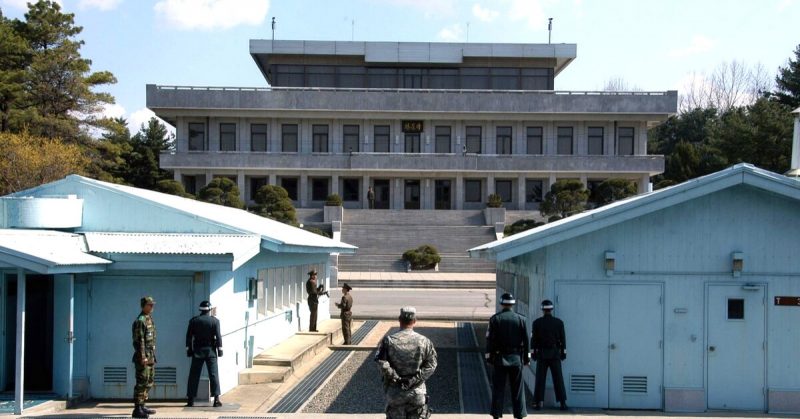For most of the world, the Korean Demilitarized Zone (DMZ) serves as a reminder of the Korean War, a war that was fought in the Korean Peninsula, which had remained divided since the North had been taken from Japanese control by the Soviets at the end of WW2. But for those in the Korean countries, the DMZ is much more than that.
For those in the Korean countries, the DMZ is a boundary that separates two countries, who are technically still at war. Below are 10 things you should know about the Korean Demilitarized Zone.
Border
The DMZ acts as the border between North and South Korea. Closely following the 38th parallel, the zone is roughly 160 miles long and 2.5 miles wide. The zone extends out into the Yellow Sea, as the Northern Limit Line. This line is disputed and is not official per the armistice that was signed in 1953.
Joint Security Area
The Joint Security area lies on the west coast of the DMZ. It’s where the armistice was signed in 1953, and is where the two countries hold meetings and negotiations. There are several buildings there that have been built for these talks. These buildings are referred to as Conference Row. It is the only part of the DMZ where the two countries have men standing face to face. You can visit the Joint Security Area today through several tourism agencies, but visitors are required to sign a waiver that notes the possibility of injury or death.
It is the only part of the DMZ where the two countries have men standing face to face. You can visit the Joint Security Area today through several tourism agencies, but visitors are required to sign a waiver that notes the possibility of injury or death.
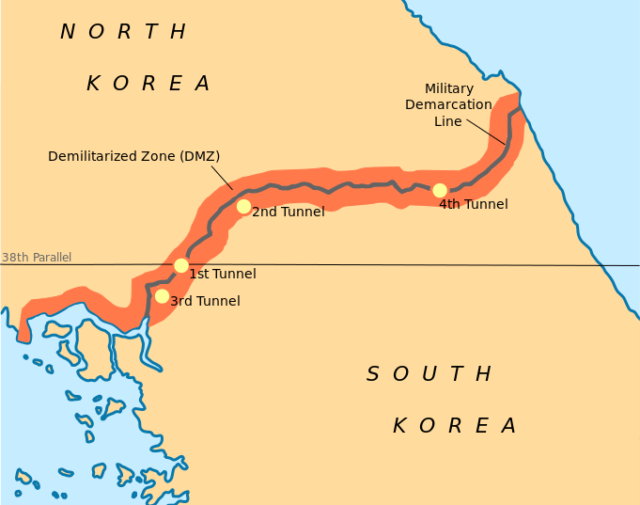
Korean DMZ Conflict
The DMZ is supposed to be a peaceful area, where the two countries share the military border and meet for negotiations. But it hasn’t been without conflict. While there is occasionally some light conflict at the DMZ, by far the most notable is the Korean DMZ Conflict which lasted 1966-1969. The conflict is even sometimes referred to as the Second Korean War. The conflict mostly occurred at/around the DMZ, but other events did occur elsewhere such as the Blue House Raid.
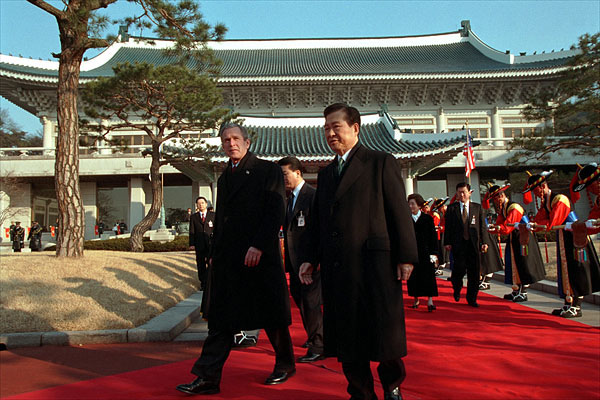
The Blue House is the residence of the President of South Korea. In 1968, 124 Korean soldiers broke through the DMZ with the mission to kill the President of South Korea at the Blue House in South Korea. They were caught after an gun battle, but they did make it to Seoul.
North Korean Tunnels
In 1974, South Korea came across a tunnel that North Korea had dug. The tunnel contained sleeping areas, weapons storage and was 3 feet tall, and 4 feet wide. It was the first of four tunnels to be found; the next three would be found over a period of 20 years. These tunnels are believed to have the capacity to transport as many as 2,000 troops an hour through them.
When the tunnels were initially discovered, the North denied their intended military use, instead saying they were used for coal mining.
Peace villages
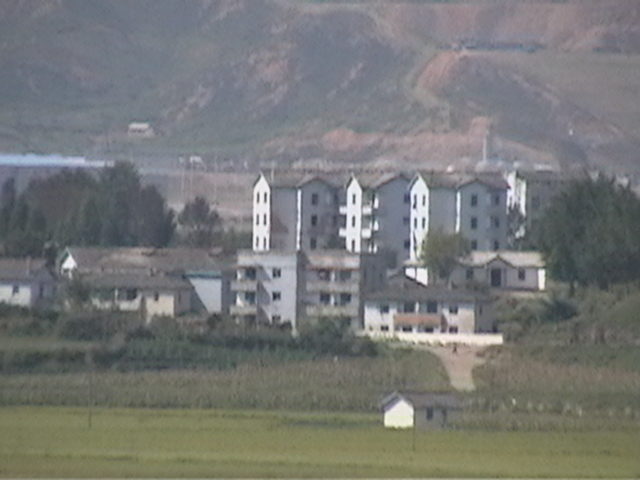
On either side of the DMZ are peace villages. On the South side is Daeseong-Dong, which lies in the DMZ. Residents of the town are considered to be from South Korea but are exempt from having to pay taxes and serving in the military, and they also have the right to vote in South Korean elections.
On the North side, there is Kijŏng-dong, which is claimed by North Korea to have 200 people living in it. The village features several painted buildings that have electricity and other amenities that would have been considered advanced in the area when they were initially built in the 1950s.
Today, though, it’s widely believed that these buildings aren’t inhabited and that the buildings are just shells with no glass or rooms. It’s believed that the lights are turned on at the same time every day, and the only people seen walking the sidewalks are caretakers.
Flagpole War
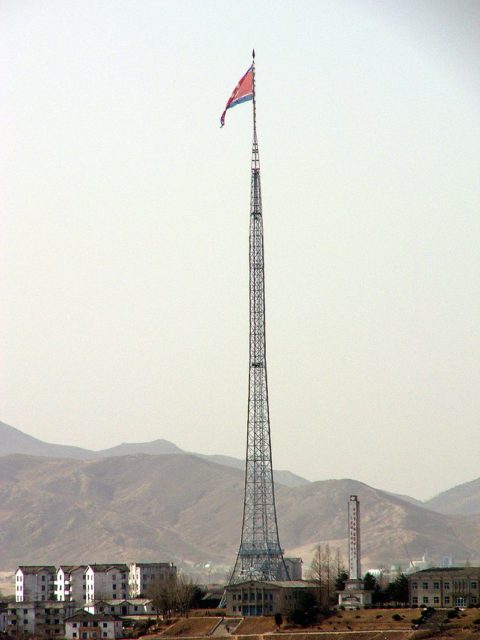
Nothing says “we are better” like a huge flagpole. Daeseong-Dong is home to a 323-foot flagpole that flies the South Korea flag. This flag weighs about 287 pounds. This flagpole was built first. Not long after the flag was raised, North Korea built a flagpole in Kijŏng-dong that stands 525 feet tall and is the fourth-tallest in the world. If you’re wondering, this pole has a flag flying that weighs 595 pounds.
Loudspeakers
Propaganda has always been widely used by the Korean countries, whether it by leaflets that are dropped by planes or words shouted by loudspeaker.
The use of loudspeakers across the DMZ was prominent from 1953 up until 2004 when both sides agreed to stop using them. But things have changed. In January of 2016 North Korea tested a hydrogen bomb, and in turn, South Korea once again began airing propaganda over the loudspeakers.
According to several news reports, South Korea is looking to spend $16 million on speaker upgrades on the DMZ.
Great Wall of Korea?
There may be a wall in the DMZ that separates the two countries. The supposed wall would have been built by South Korea with the help of the United States. North Korea claims the wall was constructed between 1977-1979 and runs almost 150 miles in length. Both South Korea and the United States have denied this claim.
Safe Haven For Animals
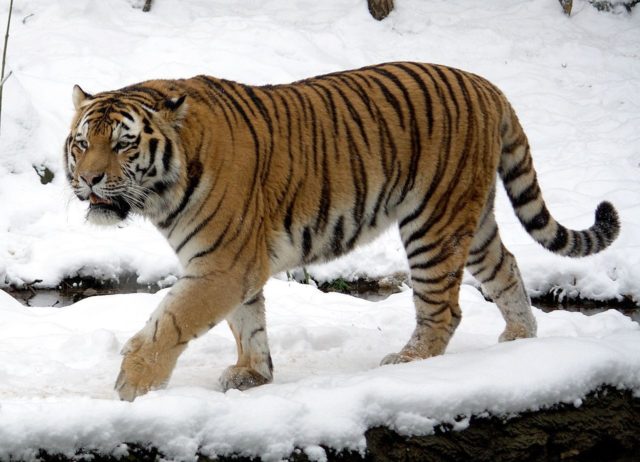
An area where no war is to be conducted and nothing can really be built has turned in to a safe haven for animals. The area is often viewed -in this perspective – as one of the best habitats in the world. Endangered animals that call this area home include the Red-Crowned cane, the Siberian tiger, and the Amur leopard.
